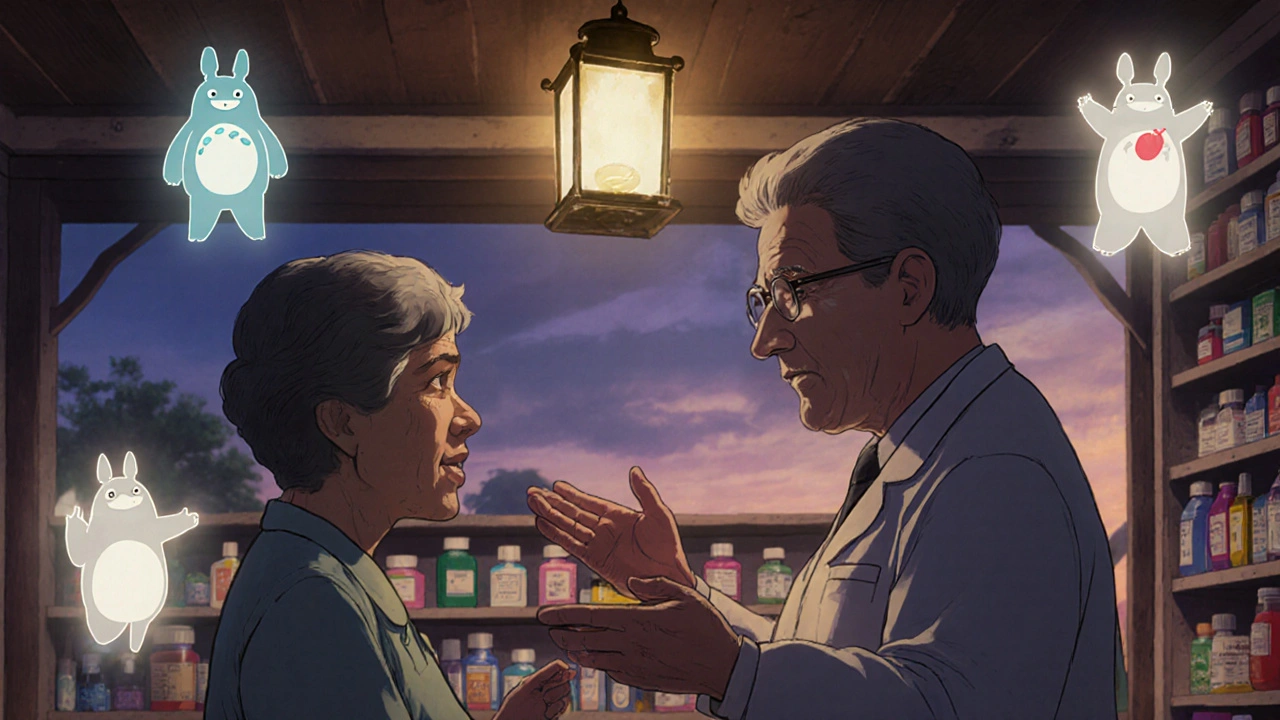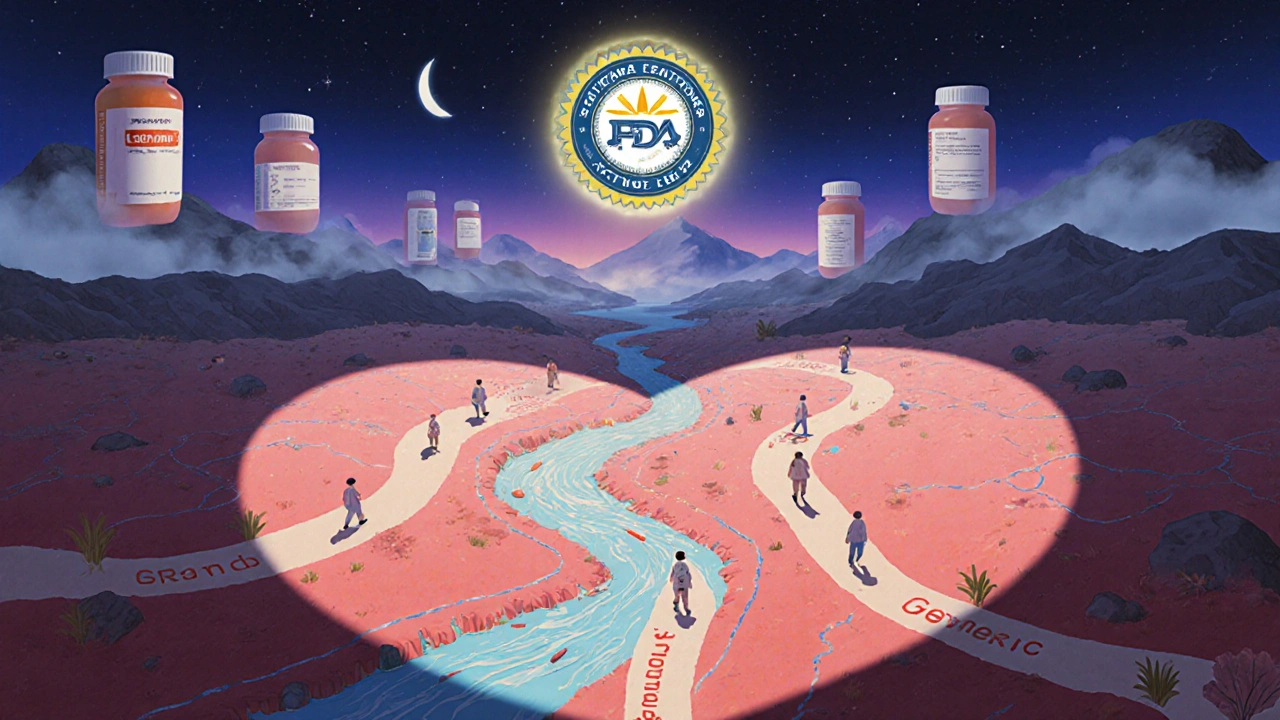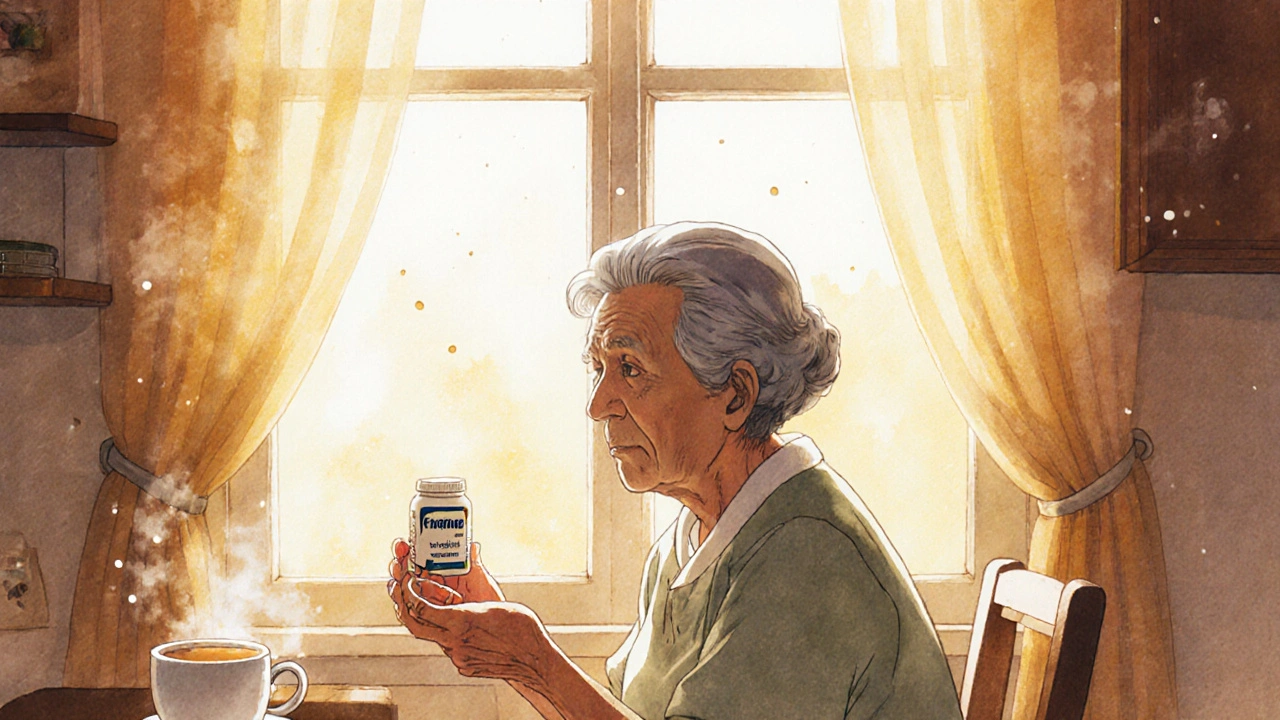When your doctor switches your brand-name blood pressure pill to a generic, you might feel uneasy. Is it the same? Will it work? Could it hurt you? These aren’t just patient fears-they’re real questions backed by years of data, lawsuits, recalls, and clinical studies. The truth isn’t simple. For most people, generic cardiovascular drugs work just as well as the brand names. But for some, the switch can trigger unexpected problems. Let’s cut through the noise and look at what the actual studies, regulators, and real patients are saying.
What Exactly Are Cardiovascular Generics?
Cardiovascular generics are chemically identical versions of brand-name heart and blood pressure drugs. They contain the same active ingredient, dose, and route of delivery. A generic losartan tablet has the same molecule as Cozaar. A generic atorvastatin pill is the same as Lipitor. The FDA requires these generics to meet strict bioequivalence standards: the amount of drug absorbed into your bloodstream must be within 80-125% of the brand version. In practice, most generics differ by less than 4%-a tiny gap, often less than what you’d see between two batches of the same brand-name drug.
These drugs are not cheap knockoffs. They’re made in the same type of facilities, under the same Current Good Manufacturing Practices (cGMP) rules. The reason they cost less? No marketing, no patent protection, no research costs. Teva, Mylan, and Sandoz dominate this market, making billions in sales every year. In 2023, generics made up 94.3% of all statin prescriptions in the U.S. That’s not because doctors are cutting corners-it’s because they’re saving patients money.
The Big Studies: Do Generics Really Work?
One of the most cited analyses came from Harvard Health in 2020, which reviewed 38 randomized controlled trials-the gold standard in medicine. In 35 of them (92.1%), generics performed just like brand-name drugs on outcomes like heart attacks, strokes, and death. The other three showed minor differences, but nothing tied to the drug’s actual effect on the heart.
A 2023 meta-analysis in PMC11951291 looked at over 1.5 million patients. It found no meaningful difference in major heart events (heart attack, stroke, death) between generics and brands overall. The risk ratio was 1.02-meaning generics were virtually identical. But here’s the twist: statins showed a small but statistically significant increase in major events with generics (risk ratio 1.13). Calcium channel blockers, on the other hand, had fewer adverse events with generics (0.90). Why? No one’s sure. It could be formulation differences, patient adherence, or even random noise in the data.
Then there’s the Canadian study that shook the medical world. In 2019, researchers tracked 136,000 seniors over 65 after generic versions of ARBs (losartan, valsartan, candesartan) hit the market. In the first month after switching, adverse events jumped-from 10% to 14% in some cases. Hospital visits for heart failure or high blood pressure spiked. The researchers didn’t blame the drugs. They blamed the switch itself. Patients were suddenly on a new pill-different color, different shape, different manufacturer. Even if the active ingredient was identical, the body sometimes reacts.
Why Do Some Patients Have Problems?
The active ingredient isn’t the whole story. Generics can have different fillers, coatings, or dyes. For most people, that doesn’t matter. But for someone with a sensitive stomach, a new coating might cause nausea. For someone on multiple medications, a slightly different absorption rate could throw off their whole regimen. One JAMA Internal Medicine study found that when pill color changed during a switch to generic, 14.2% of patients stopped taking the drug altogether. That’s not because it didn’t work-it’s because it looked wrong.
Then there’s the nitrosamine crisis. Between 2018 and 2020, over 1,200 lots of generic valsartan, losartan, and irbesartan were recalled because they contained trace amounts of cancer-causing impurities. The FDA set a safe limit of 96 nanograms per day. Some generics exceeded that. It wasn’t about efficacy-it was about contamination. And it scared people. Even after the recalls, 61% of U.S. adults still believe brand-name drugs are safer, according to a 2023 Consumer Reports survey.
Pharmacists report spending extra time explaining this. In a 2022 survey, 67% of community pharmacists said they had to counsel patients who were afraid to take their generic blood pressure meds. That’s time they could’ve spent checking for drug interactions or adjusting doses. But the fear is real-and it’s not irrational. The FDA’s own 2022 report found 12.7% of generic manufacturing facilities had critical deficiencies. That’s not the norm, but it’s not zero either.

Who Should Be Careful?
Not everyone can safely switch. The American Heart Association says avoid automatic substitution for drugs with a narrow therapeutic index-where even a small change in blood level can cause harm. That includes warfarin, digoxin, and some anti-seizure meds. While not all cardiovascular drugs fall into this category, some experts argue that certain blood pressure and cholesterol drugs might need more caution.
Older adults, especially those on five or more medications, are at higher risk. A change in pill appearance can confuse them. A new side effect might be mistaken for aging. One study found that seniors who switched to generic ARBs had a 20% higher chance of being hospitalized in the first 30 days. The problem wasn’t the drug-it was the lack of monitoring. When the switch was paired with a follow-up visit or phone check-in, the risk dropped back to normal.
Patients with heart failure, kidney disease, or those who’ve had a recent heart attack should talk to their doctor before switching. It’s not that generics are unsafe-it’s that stability matters more than savings in these cases. If you’ve been on the same brand-name drug for five years and feel fine, there’s no rush to switch.
What Does the Evidence Really Say?
Let’s be clear: the vast majority of evidence supports generic cardiovascular drugs. For 9 out of 10 patients, they’re just as safe and effective. The FDA, CDC, and major medical societies all agree. But the remaining 1 in 10? That’s where things get messy.
Some studies show higher hospitalization rates with generics. Others show no difference. Some show worse outcomes with statins. Others show better outcomes with calcium channel blockers. Why the inconsistency? Because real life isn’t a lab. People forget pills. They change diets. They switch pharmacies. They get scared and stop taking them. These factors muddy the data.
When you look only at randomized trials-where patients are randomly assigned and monitored closely-the differences vanish. That’s the clearest signal: under controlled conditions, generics perform the same.
But in the real world, where patients are old, tired, confused, or afraid, the switch can backfire. That’s not a flaw in the drug. It’s a flaw in how we manage the transition.

What Should You Do?
If you’re on a brand-name cardiovascular drug and your insurance pushes you to switch to generic, don’t panic. But don’t just accept it without asking questions.
- Ask your pharmacist: "Is this the same pill I’ve been taking?" If the color, shape, or size changed, that’s normal-but know why.
- Ask your doctor: "Is there a reason I should stay on the brand?" Especially if you’ve had recent heart issues or take multiple meds.
- Monitor yourself: "Do I feel different? Any new dizziness, fatigue, or swelling?" Report it right away.
- Don’t stop taking it: If you’re worried, call your doctor-not your friend on Reddit.
Pharmacist-led medication reviews cut discontinuation rates by over 20%. That’s not magic. It’s attention. If you’re on a generic, ask for a follow-up call or a medication therapy management session. It’s free under Medicare Part D.
The Bottom Line
Cardiovascular generics save billions. They’re safe for most people. But they’re not magic bullets. The data shows they work-unless you’re part of the 10% who react to the switch. That’s not a failure of science. It’s a reminder that medicine isn’t just about molecules. It’s about people. And people don’t respond the same way to a pill that looks different, even if it’s chemically identical.
The best approach? Trust the science, but don’t ignore your body. If you feel off after switching, speak up. Your doctor can always switch you back. The goal isn’t to use the cheapest drug. It’s to keep you healthy-and that sometimes means sticking with what works.


The data’s clear: 92% of trials show no difference. But let’s not pretend the 8% don’t exist. I’ve seen patients crash after switching - not because the drug failed, but because their body registered the pill as a threat. Psychology isn’t placebo. It’s physiology. And when you change the color, shape, or even the imprint - your nervous system doesn’t care about FDA bioequivalence. It cares about familiarity. This isn’t just about chemistry. It’s about neurology.
So let me get this straight - we’re spending billions on generics because they’re cheaper, but then we’re terrified to switch people because… they might feel weird? That’s not science. That’s superstition dressed in lab coats. If the molecule is identical, then the problem isn’t the pill - it’s the narrative we’ve sold patients. You think people are afraid of the drug? No. They’re afraid of being used. And the system’s been feeding them that fear for decades.
I’ve been on a generic statin for three years. No issues. But my mom switched from brand to generic losartan and started feeling dizzy. She didn’t stop it - she just called her pharmacist. They did a med review, checked her BP, and switched her back. It took 10 minutes. No drama. No panic. Just care. That’s the missing piece - not the drug, but the follow-up.
I think we’re missing the forest for the trees here. The FDA’s bioequivalence standard is 80-125% - that’s a 45% window. That’s not tight. And while most generics fall within 4%, some don’t. And when you’re on a drug where a 5% fluctuation can cause arrhythmia or renal stress - that’s not negligible. Also, let’s talk about the fillers. Talc, lactose, dyes - some people are sensitive. Not allergic. Just sensitive. And no one tests for that. We assume everyone’s a blank slate. They’re not.
I used to work in a pharmacy and I can tell you - the real problem isn’t the drug, it’s the silence. Patients get handed a new pill, no explanation, no check-in. They don’t know if the dizziness is normal or dangerous. So they stop. And then they show up in the ER six weeks later with a stroke. We don’t need more studies. We need pharmacists to call people. Just once. After the switch. That’s it. One phone call. It cuts discontinuation by 20%. That’s not magic. That’s basic human care.
Oh please. The nitrosamine recalls? The 12.7% of facilities with critical deficiencies? The fact that 61% of Americans think brand-name is safer? This whole thing is a corporate scam. Generics aren’t safer. They’re cheaper. And the FDA? They’re understaffed, underfunded, and overworked. They’re approving generics made in factories where the toilets are clogged and the air filters are covered in dust. You think your blood pressure med is safe? You’re just lucky. And if you’re not? Well - that’s the cost of capitalism.
I’m from New Zealand. We’ve used generics for decades. No drama. Why? Because pharmacists talk to patients. Always. Even if it’s just, ‘Hey, this looks different, right? How are you feeling?’ That’s all it takes. We don’t treat meds like widgets. We treat people like people.
The Canadian study on seniors is the most telling. Not because the drug failed - because the system failed. No transition plan. No monitoring. No education. Just a formulary change. That’s not a drug issue. That’s a healthcare delivery issue. We’re treating medication switches like software updates. They’re not. They’re medical interventions.
I had a friend who switched to generic metoprolol and started hallucinating. Not joking. She saw spiders crawling on the wall. She thought her pills were poisoned. She went to the ER. Turns out - it was the dye. The brand used a different coating. The generic used FD&C Red No. 40. She’s allergic. No one told her. No one asked. And now she won’t take ANY generic. Not because it’s unsafe. Because she was abandoned by the system.
I’m a nurse. I’ve seen patients cry because they were switched from their brand-name drug. Not because they were sick. Because they felt like they were being punished. Like their health wasn’t worth the extra $10. We need to stop making people choose between dignity and affordability. Generics are fine. But forcing a switch without support? That’s not cost-saving. That’s cruelty disguised as efficiency.
Wait so you’re saying if I take a generic and feel weird it’s not the drug it’s me? That’s what you want me to believe? I don’t think so. My uncle died after switching. His heart just… stopped. They said it was ‘natural causes.’ But he was fine on the brand. Now I only take brand. And I’m not sorry.
The real story? Big Pharma paid the FDA to allow generics. Then they made the generics themselves through subsidiaries. Teva? Mylan? They used to make the brand names. Now they make the generics. Same factories. Same people. Just different labels. You think this is about savings? Nah. It’s about control. The system wants you dependent on pills - not healthy. And generics? They’re just the new leash.
The meta-analysis you cited? It’s flawed. It pooled all cardiovascular drugs together. But statins? They showed a 13% increased risk. That’s not noise. That’s a signal. And the nitrosamine recalls? Over 1,200 lots. That’s not contamination. That’s systemic negligence. The FDA’s 96ng/day limit? It’s based on rodent studies. Humans aren’t rats. And we’re dosing elderly patients with chronic disease with compounds that are carcinogenic at 10x the limit. This isn’t medicine. It’s chemical roulette.
I’m from India - generics are our lifeblood. We don’t have the luxury of brand names. But here’s the thing: our pharmacists know their patients. They remember what you took last month. They ask how you’re sleeping. They check your BP. It’s not perfect. But it’s personal. Maybe the answer isn’t more science. Maybe it’s more humanity.
In the U.S. we treat medicine like a product. In Japan? It’s a relationship. Doctors visit you at home. Pharmacists call every week. No one switches you without consent. Maybe the real issue isn’t the pill - it’s that we’ve lost the human connection in healthcare. Generics aren’t the problem. Our system is.
If you’re not rich, you’re a guinea pig. That’s the bottom line.
I’ve been on generics for 12 years. No problems. But I also don’t take them blindly. I check the pill. I know what it looks like. I track my BP. I talk to my doc. Medicine isn’t magic. It’s a partnership. You have to show up. The pill doesn’t care if you’re scared. But you? You matter.
The FDA’s bioequivalence standard is statistically inadequate for drugs with narrow therapeutic indices. The 80-125% window permits a 25% underdose - which, for a patient with systolic heart failure, may be lethal. Furthermore, the lack of post-marketing pharmacovigilance for generics is a regulatory blind spot. The agency relies on passive reporting, which undercounts adverse events by 90%. This is not merely a clinical concern - it is a failure of administrative oversight at the highest institutional level.